by Thomas Keightley from the Fairy Mythology
Like him, the Sprite,
Whom maids by night
Oft meet In glen that’s haunted.
Moore.
We commence our survey of the lands of Celts and Cymry with Ireland, as being the first in point of importance, but still more as being the land of our birth. It is pleasing to us, now in the autumn of our life, to return in imagination to where we passed its spring–its most happy spring.
As we read and meditate, its mountains and its values, its verdant fields and lucid streams, objects on which we probably never again shall gaze, rise up in their primal freshness and beauty before us, and we are once more present, buoyant with youth, in the scenes where we first heard the fairy-legends of which we are now to treat.
Even the forms of the individual peasants who are associated with them in our memory, rise as it were from their humble resting-places and appear before us, again awaking our sympathies; for, we will boldly assert it, the Irish peasantry, with all their faults, gain a faster hold on the affections than the peasantry of any other country.
We speak, however, particularly of them as they were in our county and in our younger days; for we fear that they are somewhat changed, and not for the better. But our present business is with the Irish fairies rather than with the Irish people.
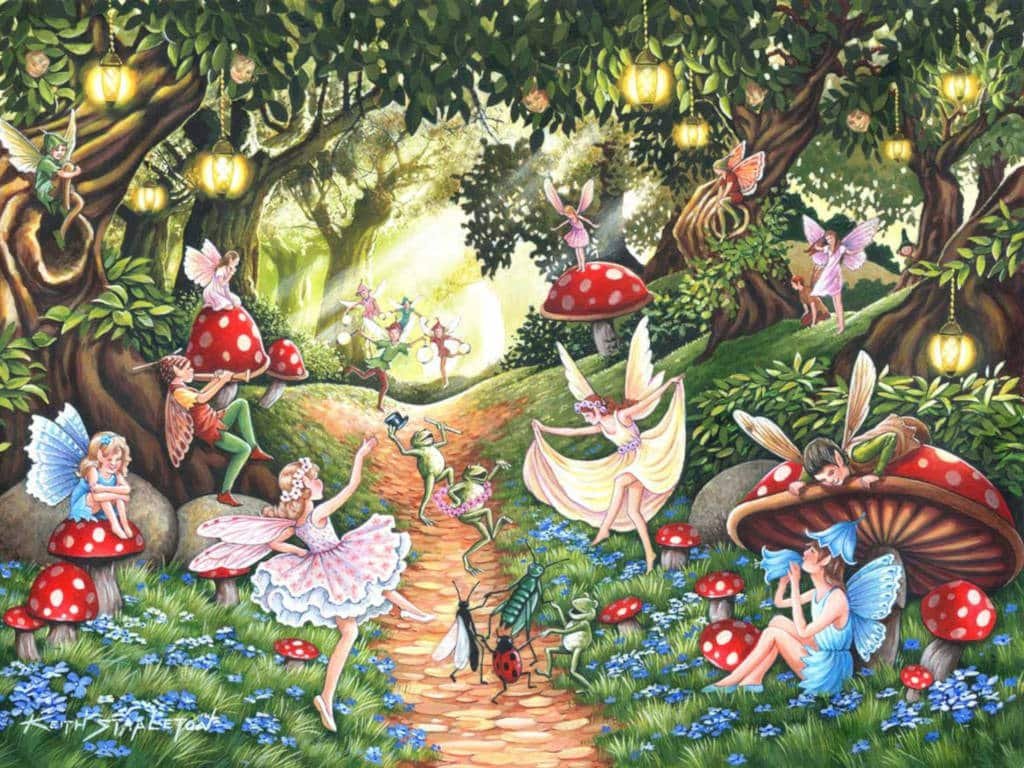
The fairies of Ireland can hardly be said to differ in any respect from those of England and Scotland. Like them they are of diminutive size, rarely exceeding two feet in height; they live also in society, their ordinary abode being the interior of the mounds, called in Irish, Raths (Rahs), in English, Moats, the construction of which is, by the peasantry, ascribed to the Danes from whom, it might thence perhaps be inferred, the Irish got their fairies direct and not vid England.
From these abodes, they are at times seen to issue mounted on diminutive steeds, in order to take at night the diversion of the chase. Their usual attire is green with red caps. [a] They are fond of music, but we do not in general hear much of their dancing, perhaps because on account of the infrequency of thunder, the fairy rings are less numerous in Ireland than elsewhere.
Though the fairies steal children and strike people with paralysis and other ailments (which is called being fairy-struck), and shoot their elf-arrows at the cattle, they are in general kind to those for whom they have contracted a liking, and often render them essential service in time of need.
They can make themselves visible and invisible, and assume any forms they please. The pretty tiny conical mushrooms which grow so abundantly in Ireland are called Fairy-mushrooms; a kind of nice regularly-formed grass is named Fairy-flax, and the bells of the foxglove called in some places Fairy-bells, are also said to have some connexion with the Little People.
The popular belief in Ireland also is, that the Fairies are a portion of the fallen angels, who, being less guilty than the rest, were not driven to hell, but were suffered to dwell on the earth. They are supposed to be very uneasy respecting their condition after the final judgment.
The only names by which they are known in those parts of Ireland in which the English language is spoken are, Fairies, the Good People, and the Gentry, these last terms being placatory, like the Greek Eumenides. When, for example, the peasant sees a cloud of dust sweeping along the road, he raises his hat and says, “God speed you, gentlemen!” for it is the popular belief that it is in these cloudy vehicles that the Good People journey from one place to another.
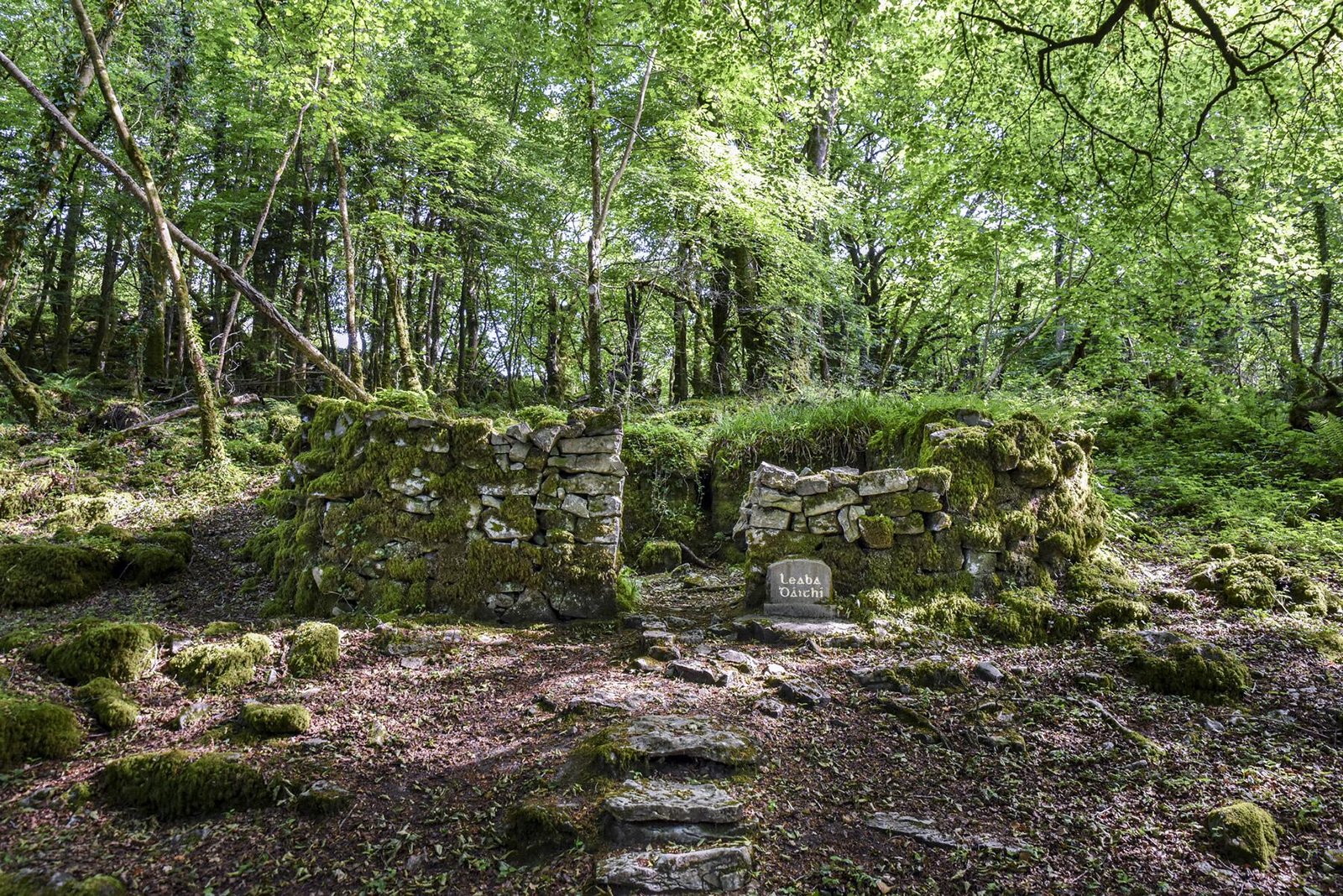
The Irish language has several names for the fairies; all however are forms or derivations of the word Shia, the meaning of which seems to be Spirit. The most usual name employed by the Minister peasantry is Shifra; we are not acquainted with the fairy belief and terminology of the inhabitants of Connemara and the other wilds of Connaught. [b]
Most of the traits and legends of the Irish fairies are contained in the Fairy Legends and Traditions of the South of Ireland, compiled by Mr. Crofton Croker. As we ourselves aided in that work we must inform the reader that our contributions, both in text and notes, contain only Leinster ideas and traditions, for that was the only province with which we were acquainted. We must make the further confession, that some of the more poetic traits which MM. Grimm, in the Introduction to their translation of this work, gives as characteristic of the Irish fairies, owe their origin to the fancy of the writers, who were, in many cases, more anxious to produce amusing tales than to transmit legends faithfully.
The Legend of Knockshegowna (Hill of the Fairy-calf) the first given in that work, relates how the fairies used to torment the cattle and herdsmen for intruding on one of their favorite places of the resort which was on this hill. The fairy-queen, it says, having failed in her attempts to daunt a drunken piper who had undertaken the charge of the cattle, at last, turned herself into a calf and, with the piper on her back, jumped over the Shannon, ten miles off, and back again. Pleased with his courage, she agreed to abandon the hill for the future.
The Legend of Knock-Grafton tells how a little hunchback, while sitting to rest at nightfall at the side of a Rath or Moat, heard the fairies within singing over and over again, DaLuan, Da Mart! (i.e., Monday, Tuesday!) and added, weary with the monotony, Agus da Cabin! (i.e., and Wednesday!) The fairies were so delighted with this addition to their song that they brought him into the Moat, entertained him, and finally freed him from the incumbrance of his hump.
Another hunchback hearing the story went to the Moat to try if he could meet with the same good fortune. He heard the fairies singing the amended version of the song, and, anxious to contribute, without waiting for a pause or attending to the rhythm or melody, he added Agus da Hena! (i.e., and Friday.) His reward was, being carried into the Moat, and having his predecessor’s hump placed on his back in addition to his own. [c]
In the story named the Priest’s Supper, a fisherman at the request of the fairies asks a priest who had stopped at his house, whether they would be saved or not at the last day. The priest desired him to tell them to come themselves and put the question to him, but this they declined to do, and the question remained undecided.
The next three stories are of changelings. The Young Piper, one of our own contributions, will be found in the Appendix. The Changeling has nothing peculiar in it; but the Brewery of Eggshells is one which we find in many places, even in Brittany and Auvergne. In the present version, the mother puts down eggshells to boil, and to the inquiry of the changeling, she tells him that she is brewing them, and clapping his hands he says, “Well! I’m fifteen hundred years in the world, and I never saw a brewery of eggshells before!”
In the Capture of Bridget Purcell, a girl is struck with a little switch between the shoulders, by something in the form of a little child that came suddenly behind her, and she pined away and died.
The Legend of Bottle Hill gives the origin of that name, which was as follows. A poor man was driving his only cow to Cork to sell her. As he was going over that bill he was suddenly joined by a strange-looking little old man with a pale withered face and red eyes, to whom he was eventually induced to give his cow in exchange for a bottle, and both cow and purchaser then disappeared.
When the poor man came home he followed the directions of the stranger, and spreading a cloth on the table, and placing the bottle on the ground, he said, “Bottle, do your duty!” and immediately two little beings rose out of it, and having covered the table with food in gold and silver dishes, went down again into the bottle and vanished. By selling these he got a good deal of money and became rich for one in his station. The secret of his bottle however transpired, and his landlord induced him to sell it to him.
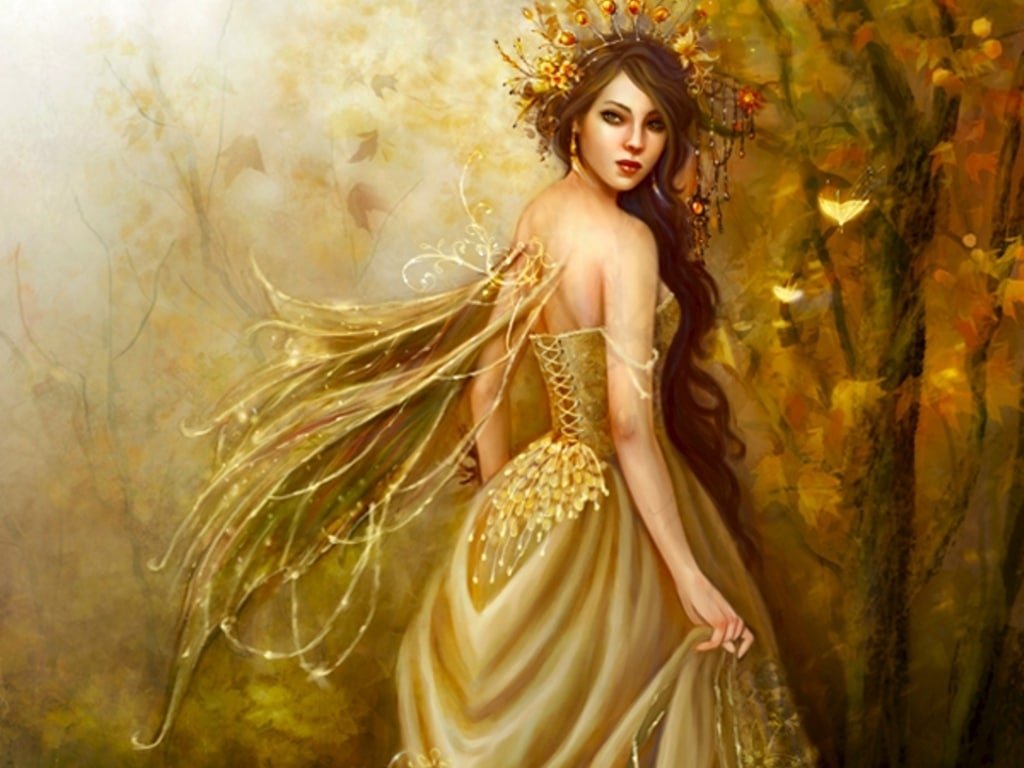
But his prosperity vanished with it, and he was again reduced to one cow, and obliged to drive her to Cork for sale. As he journeyed over the same hill he met the same old man and sold him the cow for another bottle. Having made the usual preparations, he laid it on the ground and said, “Bottle, do your duty!” but instead of the tiny little lads with their gold and silver dishes, there jumped up out of it two huge fellows with cudgels, who fell to belaboring the whole family.
When they had done and were gone back into the bottle, the owner of it, without saying a word, put it under his coat and went to his landlord, who happened to have a great deal of company with him, and sent in word that he was come with another bottle to sell. He was at once admitted, the bottle did its duty, and the men with cudgels laid about them on all present, and never ceased till the original wealth-giving bottle was restored. He now grew richer than ever, and his son married his landlord’s daughter, but when the old man and his wife died, the servants, it is recorded, fighting at their wake, broke the two bottles. [d]
The Confessions of Tom Bourke, as it contains a faithful transcript of the words and ideas of that personage, is perhaps the most valuable portion of the work. From this, we learn that in Munster the fairies are, like the people themselves, divided into factions. Thus we are told that, on the occasion of the death of Bourke’s mother, the two parties fought for three continuous nights, to decide whether she should be buried with her own or her husband’s peçple (i. e. family).
Bourke also had sat for hours looking at two parties of the Good People playing at the popular game of hurling, in a meadow at the opposite side of the river, with their coats and waistcoats off, and white handkerchiefs on the heads of one, and red on these of the other party.
A man whom Tom knew was returning one evening from a fair, a little elevated of course when he met a Berrin (i. e. funeral), which he joined, as is the custom; but, to his surprise, there was no one there that he knew except one man, and he had been dead for some years. When the berrin was over, they gathered around a piper and began to dance in the churchyard.
Davy longed to be among them, and the man that he knew came up to him, and bid him take out a partner, but on no account to give her the usual kiss. He accordingly took out the purtiest girl in the ring, and danced a jig with her, to the admiration of the whole company; but in the end, he forgot the warning, and complied with the custom of kissing one’s partner. All at once, everything vanished; and when Davy awoke the next morning, he found himself lying among the tombstones.
Another man, also a little in liquor, was returning one night from a Berrin. The moon was shining bright, and from the other side of the river came the sounds of merriment, and the notes of a bagpipe. Taking off his shoes and stockings, he waded across the river, and there he found a great crowd of people dancing on the Inch [an island, coast, bank of sea, or river] on the other side. He mingled with them without being observed, and he longed to join in the dance; for he had no mean opinion of his own skill.
He did so but found that it was not to be compared to theirs, they were so light and agile. He was going away quite in despair, when a little old man, who was looking on with marks of displeasure on his face, came up to him and telling him he was his friend, and his father’s friend, bade him go into the ring and call for a lilt. He complied, and all were amazed at his dancing; he then got a table and danced on it, and finally, he span round and round on a trencher.
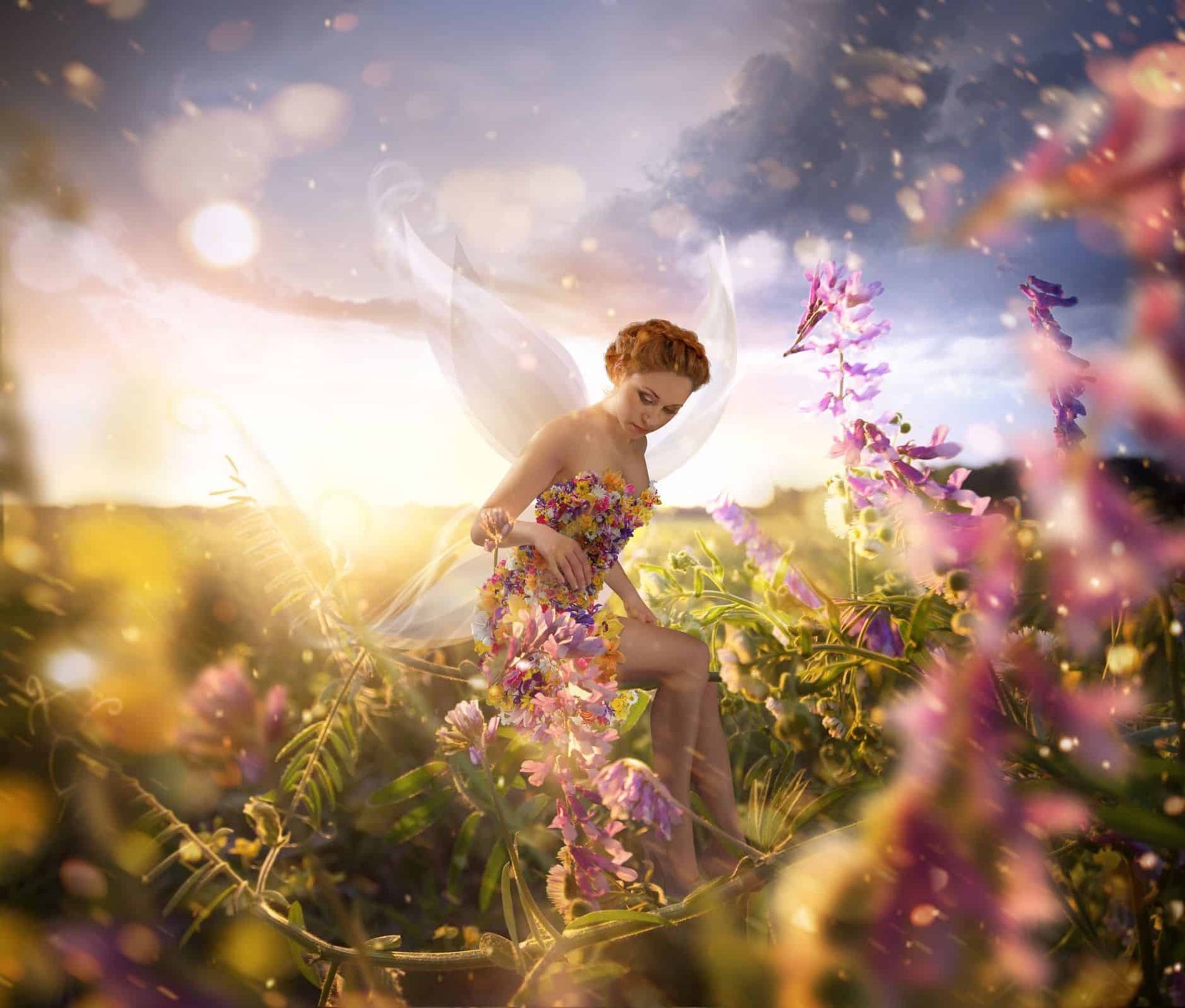
When he had done, they wanted him to dance again; but he refused with a great oath, and instantly he found himself lying on the Inch with only a white cow grazing beside him. On going home, he got shivering and fever. He was for many days out of his mind, and recovered slowly; but ever after he had great skill in fairy matters. The dancers, it turned out, had belonged to a different faction, and the old man who gave him his skill to that to which he himself was attached.
In these genuine confessions, it is very remarkable that the Good People are never represented as of a diminutive size; while in every story that we ever heard of them in Leinster, they were of pygmy stature. The following account of their mode of entering houses in Ulster gives them dimensions approaching to those of Titania’s ‘small elves.’
A Fairy, the most agile, we may suppose, of the party, is selected, who contrives to get up to the keyhole of the door, carrying with him a piece of thread or twine. With this, he descends on the inside, where he fastens it firmly to the floor or some part of the furniture. Those without then ‘haul taut and belay,’ and when it is fast they prepare to march along this their perilous Es-Sirat, leading to the paradise of pantry or parlor, in this order.
First steps up the Fairy-piper, and in measured pace pursues his adventurous route, playing might and main an invigorating elfin-march, or other spirit-stirring air; then one by one the rest of the train mount the cord and follow his steps. Like the old Romans, in their triumphal processions, they pass beneath the lofty arch of the keyhole and move down along the other side. Lightly, one by one, they then jump down on the floor, to hold their revels or accomplish their thefts.
We have never heard of any being, in the parts of Ireland with which we are acquainted, answering to the Boggart, Brownie, or Nis. A farmer’s family still, we believe, living in the county of Wicklow, used to assert that in their grandfather’s time they never had any trouble about washing up plates and dishes; for they had only to leave them collected in a certain part of the house for the Good People, who would come in and wash and clean them, and in the morning everything would be clean and in its proper place.
Yet in the county of Cork, it would seem that the Cluricaun, of which we shall presently speak, used to enact the part of Nis or Boggart. Mr. Croker tells a story of a little being which he calls a Cluricaun, that haunted the cellar of a Mr. Macarthy, and in a note on this tale, he gives the contents of a letter informing him of another ycleped Little Wildbean, that haunted the house of a Quaker gentleman named Harris, and which is precisely the Nis or Boggart.
This Wildbean, who kept to the cellar, would if one of the servants through negligence left the beer-barrel running, wedge himself into the cock and stop it, till someone came to turn it. His dinner used to be left for him in the cellar, and the cook having, on Friday, left him nothing but part of a herring and some cold potatoes, she was at midnight dragged out of her bed, and down the cellar-stairs, and so much bruised that she kept her bed for three weeks.
In order, at last, to get rid of him, Mr. Harris resolved to remove him, being told that if he went beyond a running stream the Cluricaun could not follow him. The last cart, filled with empty barrels and such like, was just moving off, when from the bung-hole of one of them Wildbean cried out, “Here, master! here we go all together!” “What!” said Mr. Harris, “dost thou go also?” “Yes, to be sure, master. Here we go, all together!” “In that case, friend,” replied Mr. Harris, “let the carts be unloaded; we are just as well where we are.” It is added, that “Mr. Harris died soon after, but it is said the Cluricaun still haunts the Harris family.”
In another of these Fairy Legends, Teigue of the Lee, who haunted the house of a Mr. Pratt, in the county of Cork, bears a strong resemblance to the Hinzelmann of Germany. To the story, which is exceedingly well told by a member of the Society of Friends, now no more, also the narrator of the Legend of Bottle-hill, Mr. Croker has in his notes added some curious particulars.
A being named the Fear Dearg (i. e. Red Man) is also known in Munster. A tale named The Lucky Guest, which Mr. Croker gives as taken down verbatim from the mouth of the narrator by Mr. M’Clise, the artist, gives the fullest account of this being. A girl related that when she was quite a child, one night, during a storm of wind and rain; a knocking was heard at the door of her father’s cabin, and a voice like that of a feeble old man craving admission.
On the door’s being opened, there came in a little old man, about two feet and a half high, with a red sugar-loaf hat and a long scarlet coat, reaching down nearly to the ground, his hair was long and grey, and his face yellow and wrinkled. He went over to the fire (which the family had quitted in their fear), sat down and dried his clothes, and began smoking a pipe that he found there. The family went to bed, and in the morning he was gone.
About a month after he began to come regularly every night at about eleven o’clock. The signal which he gave was thrusting a hairy arm through a hole in the door, which was then opened, and the family retired to bed, leaving him the room to himself. If they did not open the door, some accident was sure to happen the next day to themselves or their cattle. On the whole, however, his visits brought good luck, and the family prospered, till the landlord put them out of their farm, and they never saw the Fear Dearg more.
As far as our knowledge extends, there is no being in the Irish rivers answering to the Nix or Kelpie; but on the sea coast, the people believe in beings of the same kind as the Mermen and Mermaids. The Irish name is Merrow, and legends are told of them similar to those of other countries. Thus the Lady of Gollerus resembles the Mermaid-wife and others which we have already related. Instead, however, of an entire dress, it is a kind of cap, named Cohuleen Driuth, without which she cannot return to her subaqueous abode. Other legends tell of matrimonial unions formed by mortals with these sea–ladies, from which some families in the south claim a descent. The Lord of Dunkerron, so beautifully told in verse by Mr. Croker, relates the unfortunate termination of a marine amour of one of the O’Sullivan family. The Soul-cages alone contains the adventures of a Mermnan.
The Irish Pooka [e] is plainly the English Pouke, Puck, and would seem, like it, to denote an evil spirit. The notions respecting it are very vague. A boy in the mountains near Killarney told Mr. Croker that “old people used to say that the Pookas were very numerous in the times long ago. They were wicked-minded, black-looking, bad things, that would come in the form of wild colts, with chains hanging about them. They did great hurt to benighted travelers.” Here we plainly have the English Puck, but it is remarkable that the boy should speak of Pookas in the plural number. In Leinster, it was always the, not a Pooka, that we heard named. When the blackberries begin to decay, and the seeds appear, the children are told not to eat them any longer, as the Pooh has dirtied on them.
The celebrated fall of the Liffey, near Ballymore Eustace, is named Pool-a-Phooka, or The Pooka’s Hole. Near Macroom, in the county of Cork, are the ruins of a castle built on a rock, named Carrig-a-Phooka, or The Pooka’s Rock. There is an old castle not far from Dublin, called Puck’s Castle, and a townland in the county of Kildare is named Puckstown. The common expression plays the Puck is the same as playing the deuce, play the Devil.
The most remarkable of the Fairy-tribe in Ireland, and one which is peculiar to the country, is the Leprechaun. [f] This is a being in the form of an old man, dressed as he is described in one of the following tales. He is by profession a maker of brogues; he resorts in general only to secret and retired places, where he is discovered by the sounds which he makes hammering his brogues.
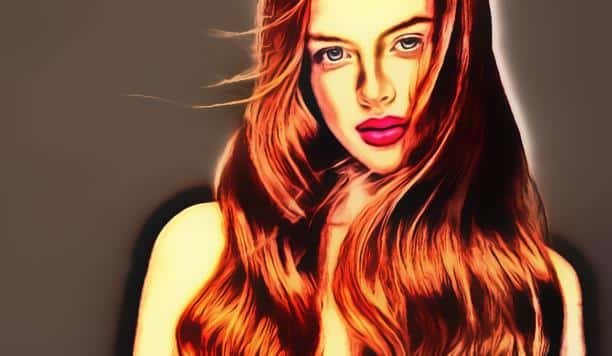
He is rich, like curmudgeons of his sort, and it is only by the most violent threats of doing him some bodily harm, that be can be made to show the place where his treasure lies; but if the person who has caught him can be induced (a thing that always happens, by the way) to take his eyes off him, he vanishes and with him the prospect of wealth. The only instance of more than one Leprechaun being seen at a time is that which occurs in one of the following tales, which was related by an old woman, to the writer’s sister and early companion, now no more.
Yet the Leprechaun, though, as we said, peculiar to Ireland, seems indebted to England, at least, for his name. In Irish, as we have seen, he is called Lobaircin, and it would not be easy to write the English Lubberkin more accurately with Irish letters and Irish sounds. Leprechaun is evidently a corruption of that word. In the time of Elizabeth and James, the word Lubrican was used in England to indicate some kind of spirit.
Thus Drayton gives as a part of Nymphidia’s invocation of Proserpina:
By the mandrake’s dreadful groans;
By the Lubrican’s sad moans;
By the noise of dead men’s bones
In charnelhouse rattling.
That this was the Leprechaun is, we think, clear; for in the Honest Whore of Decker and Middleton, the following words are used of an Irish footman:
As for your Irish Lubrican, that spirit
Whom by preposterous charms thy lust has raised.
Part II, i. 1. [g]
We thus have the Leprechaun as a well-known Irish fairy, though his character was not understood, in the sixteenth century.
The two following tales we ourselves beard from the peasantry of Kildare in our boyhood:
[a] Mr. Croker says, that according to the Munster peasantry the ordinary attire of the Fairy is a black bat, green coat, white stockings, and red shoes.
[b] We never heard a fairy legend from any of the Connaught-men with whom we conversed in our boyhood. Their tales were all of Finn-mac-Cool and his heroes.
[c] See Brittany, and Spain, in both of which the legend is more perfect; but it is impossible to say which is the original. Parnell’s pleasing Fairy Tale is probably formed on this Irish version, yet it agrees more with the Breton legend.
[d] This story may remind one of the Wonderful Lamp and others. There Is something of the same kind in the Pentamerone.
[e] It is a rule of the Irish language, that the initial consonant of an oblique case, or of a word in regimine, becomes aspirated; thus Pooka (nom.), na Phooka (gen.), mac son, a mhic (vic) my son.
[f] In Irish lubárkin; the Ulster name is Logheryman, in Irish lucharman. For the Cork term Cluricaun, the Kerry Luricaun, and the Tipperary Lurigadaun, we have found no equivalents in the Irish dictionaries. The short o in Irish, we may observe, is pronounced as in French and Spanish, i. e. as u in but, cut; ai nearly as an in fall. It may be added, on account of the following tales, that in Kildare and the adjoining counties the short English u, in but, cut, etc., is invariably pronounced as in pull, full, while this u is pronounced as that in but, cut.
[f] In the place of the Witch of Edmonton usually quoted with this, Lubrick is plainly the Latin lubricus.
[g] It will be observed that these, as well as the Young Piper in the Appendix, are related to the character of a peasant. This was in accordance with a frame that was proposed for the Fairy Legends, but which proved too difficult of execution to be adopted.
Source: Renegade Tribune

Jack Heart, pen name for George Esposito, is known for his extensive research and writings that provide high-quality information and authentic alternatives to mainstream narratives on a wide variety of subjects. His life experiences make for a highly intriguing perspective. Jack runs his own research expose site called: Jack Heart Esoteric Evolution
ATTENTION READERS
We See The World From All Sides and Want YOU To Be Fully InformedIn fact, intentional disinformation is a disgraceful scourge in media today. So to assuage any possible errant incorrect information posted herein, we strongly encourage you to seek corroboration from other non-VT sources before forming an educated opinion.
About VT - Policies & Disclosures - Comment Policy




Jack,
We need 100 more of you in this world!! Your articles are unique, original, creative and simply brilliant!!
Thank you!!! Thank you!!! Thank. you!!!!
This ones over a hundred and fifty years old, came from my Substack people, I got an eclectic band of highly effective internet warriors that’s why they hate me Peace
Quote from the book The Irish in America One Thousand Years Before Columbus (Martin J. Mulroy).
It is not alone the name of Estotiland, which lends a new proof to this probable identity of Irland It Mikla, and of this country discovered by the Friesland fishermen; for Ireland, during all the Middle Agesis called Scotia or Scotland; and if the first meditor of the voyages of the Zenoes, had misunderstood his text, and printed Estotil and for Escotiland, it is quite possible that the Escotilanders descended in fact from the Irish colony, of which we have already told the story. For a further account of this colony we refer the reader to the “Voyages of the Venetian Brothers, Nicolo and Antonio Zeno, to the Northern Seas in the Fourteenth Century” which was published in English, in London in 1873.
…when first visited by French missionaries from Canada one of them Father LeClerque Concludes that the Cross was Implanted on American Soil by the Gauls.
.. Father Le Clerque, was stationed for twelve years (1675-87), in Gaspasia,the region which corresponds to the ancient Huitra-manna-land.
Very much surprised to find the worship of the cross established among the savages, he was delighted while evangelizing them.
Friesland or Frislandt as on the Mercatormap. Friesians were the first people to inhabit the Nether lands all over the coast. Ultimately were driven to the very North. now called Friesland. Long before there was Doggerland connecting the Netherlands/France, England, Irland together in one continent. A huge tsunami where a part of Norway broke off destroyed that leaving only the Doggerbank until that too became sunken land. Some of the stories sound mixed up with the stories of the Sidhe. And then there were the Tuatha who landed in Spaceships.
Quote from the book
BATTLES AND ENCHANTMENTS
by Norreys Jephson O’Conor 1922.
Chapter 1
THE LANDING OF THE DEDANNANS
Out of the northern fogs they came,
The race with golden hair.
Were they gods or men,
whose beauty shone
Like stars in frosty air?
Years ago, a great fleet set out from the northern isles of the world. On board the ships were the Tuatha DeDannan, or Dedannans, People of the God Whose Mother Was Dana.They had out grown their own country and were seeking new lands, leaving behind them their four cities, Falias, Findias, Murias, and Gorias, where they had learned not only the arts of peace and the science of war, but magic, in which “they surpassed the sages of the arts of heathendom.” Out of each city they carried a treasure of exceptional virtue.
From Falias they took the Stone of Fal,which was used at the crowning of kings and was wont to roar whenever the rightful king sat upon it. This stone is said to have been found later in Scotland, where, as the Stone of Scone, it was borne off to London by Edward I of England, and to this day it forms the seat of the Coronation Chair of the English kings.
From the city of Findias the Dedannans took an irresistible sword; from Gorias, a spear so powerful that whoever held it in his hand could not be overthrown; and, out of Murias, a cauldron, known as “the Dagda’s, from which no company ever went unthankful.”
The Dedannans steered south and landed on the northern coast of Ireland, or Eriu. At that time the country was occupied by a people called Fir Bolg, Men of the Bag, so named from their custom of marching to battle headed by bagpipers.
I just listen to Enya and The Clannad singing in the native tongue. Like my grandmother did.
I noticed a common thread here and that was bottles containing spirits of anther kind were involved🤣 Seriously though I noticed a distinction between American Indian mythology and that of Europe. Here the flora and fauna contain spirits. The most sacred being the Buffalo and Eagle.
Comments are closed.